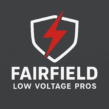What Low Voltage Solutions Do Fairfield Healthcare Facilities Need Most?
Introduction
In Network Wiring for Offices in Fairfield, California, healthcare facilities are increasingly relying on low voltage systems to enhance patient care, ensure safety, and streamline operations. These systems, which operate at 50 volts or less, are integral to modern medical environments. This article delves into the most critical low voltage solutions needed in Fairfield’s healthcare sector, backed by current regulations and industry standards.
Structured Cabling: The Backbone of Healthcare IT Infrastructure
Structured cabling is fundamental to the IT infrastructure of healthcare facilities, supporting data transmission for electronic health records (EHRs), imaging systems, and communication networks. A well-designed cabling system ensures reliable connectivity, which is crucial for the seamless operation of medical technologies. In Fairfield, local providers like Fairfield Low Voltage Pros specialize in structured cabling solutions tailored to healthcare environments. fairfieldlowvoltagepros.com
Nurse Call Systems: Enhancing Patient Communication
Nurse call systems are vital for facilitating communication between patients and healthcare providers. These systems allow patients to request assistance promptly, improving response times and patient satisfaction. In Fairfield, healthcare facilities are adopting advanced nurse call systems that integrate with mobile devices and real-time monitoring tools to enhance responsiveness.
Fire Alarm Systems: Ensuring Life Safety
Fire alarm systems are critical for life safety in healthcare settings. They must comply with stringent codes such as the National Fire Protection Association (NFPA) 70, also known as the National Electrical Code (NEC), which mandates that life safety systems, including fire alarms, be powered by emergency power sources. In Fairfield, healthcare facilities are investing in state-of-the-art fire alarm systems that meet these regulatory requirements. HCAI
Access Control and Video Surveillance: Securing Healthcare Environments
Access control and video surveillance systems are essential for protecting sensitive areas within healthcare facilities, such as pharmacies and patient records departments. These systems help prevent unauthorized access and ensure the safety of both patients and staff. Fairfield healthcare providers are implementing integrated security solutions that combine access control with video surveillance for comprehensive security coverage.
Audio-Visual Systems: Facilitating Communication and Collaboration
Audio-visual systems play a significant role in enhancing communication and collaboration within healthcare settings. They are used for staff training, patient education, and telemedicine consultations. In Fairfield, healthcare facilities are adopting advanced audio-visual solutions that support high-definition video conferencing and interactive learning environments.
Compliance and Regulatory Considerations
Healthcare facilities must adhere to various regulations when implementing low voltage systems. For instance, the California Electrical Code (CEC) outlines specific requirements for the installation of low voltage systems in healthcare settings, including the use of power-limited circuits and non-flexible metallic raceways for emergency systems. Compliance with these regulations ensures the safety and reliability of low voltage systems in healthcare environments. HCAI
Conclusion: Integrating Low Voltage Solutions for Optimal Healthcare Delivery
Integrating advanced low voltage solutions is essential for enhancing the efficiency, safety, and quality of care in Fairfield’s healthcare facilities. Likewise, low voltage technologies support the growing logistics and warehouse sector, enabling smarter operations, improved communication systems, and enhanced security across large-scale industrial environments. By investing in structured cabling, nurse call systems, fire alarms, access control, video surveillance, and audio-visual systems, healthcare providers can create a connected and secure environment that supports optimal patient care.
